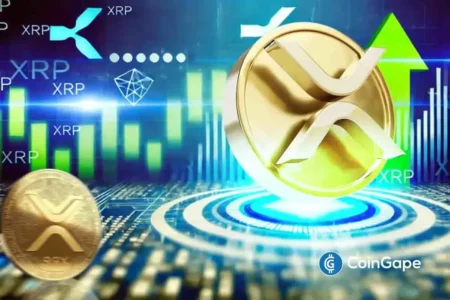Pi Network’s token (PI) price has been on a downward trend, hitting a new monthly low of $0.5376 on April 4, down 69%. This continues a sharp decline from the March peak, sparking concerns among investors. However, technical indicators suggest a potential rebound in the short term, although broader challenges may limit any significant recovery.
The Relative Strength Index (RSI) for Pi Network’s coin has dropped below 20, signaling oversold conditions on the hourly chart. Typically, when the RSI falls into this region, a short-term price rebound may follow. Historical trends in the market show that such oversold conditions often lead to temporary recoveries. Any rebound in PI price is expected to face strong resistance near the $0.6817 to $0.6915 range. This level was once support but has now turned into resistance due to the recent downturn. A break above this resistance would likely trigger a stronger rally, although broader market challenges might still limit the scope of recovery.
In addition to the RSI, the Chaikin Money Flow (CMF) is currently at -0.23, indicating negative money flow. This suggests that selling pressure remains dominant, with more capital flowing out of the token than entering. The technical analysis shows that Pi Network is highly likely to bounce from the current levels, but factors in the broader market may halt a recovery. Investor risk appetite is relatively low to moderate, leading to a preference for less-risky assets over cryptocurrencies. The protracted trade dispute between the United States and the rest of the world, along with general macroeconomic instability, also contribute to the pressure on the crypto market.
Pi Network faces internal challenges such as slow feature releases and doubts about its preparedness for the mainnet release. Critics of the Pi Core Team claim that the leadership cannot handle the increasing challenges of the project since its inception in 2019. PiDaoSwap has voiced frustration over delayed KYB processes, impacting the development of ecosystems built on the platform. The delayed KYC integration, lack of transparency, and restricted access for third-party developers continue to hinder Pi Network’s full recovery in the short term.
The overall market activity of Pi Network has been steadily rising, with trading volume reaching $478 million, indicating increased investor interest in the current downward trend. However, Pi Network’s exclusion from major platforms like Binance or Coinbase could pose challenges in attracting new investors. Without listings on major exchanges, PI price may struggle to maintain upward momentum unless it secures new listings or makes significant progress with its platform. The absence from large exchanges suggests that the coin may face difficulty in attracting new investors.
The members of the Pi Core Team are under pressure from the Pi Network community, with concerns about the leadership being out of touch with the network’s happenings. Despite over 125,000 sellers participating in the PiFest event, some community members feel that the Core Team fails to address mainnet delays, slow KYC processes, or the absence of listings. Critics recommend transparent disclosure of information and decentralizing decision-making processes to enhance accountability within the project. Addressing these issues may be crucial for Pi Network’s long-term success and price recovery.

















